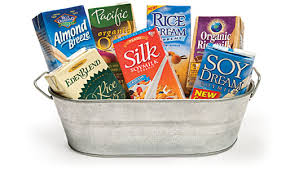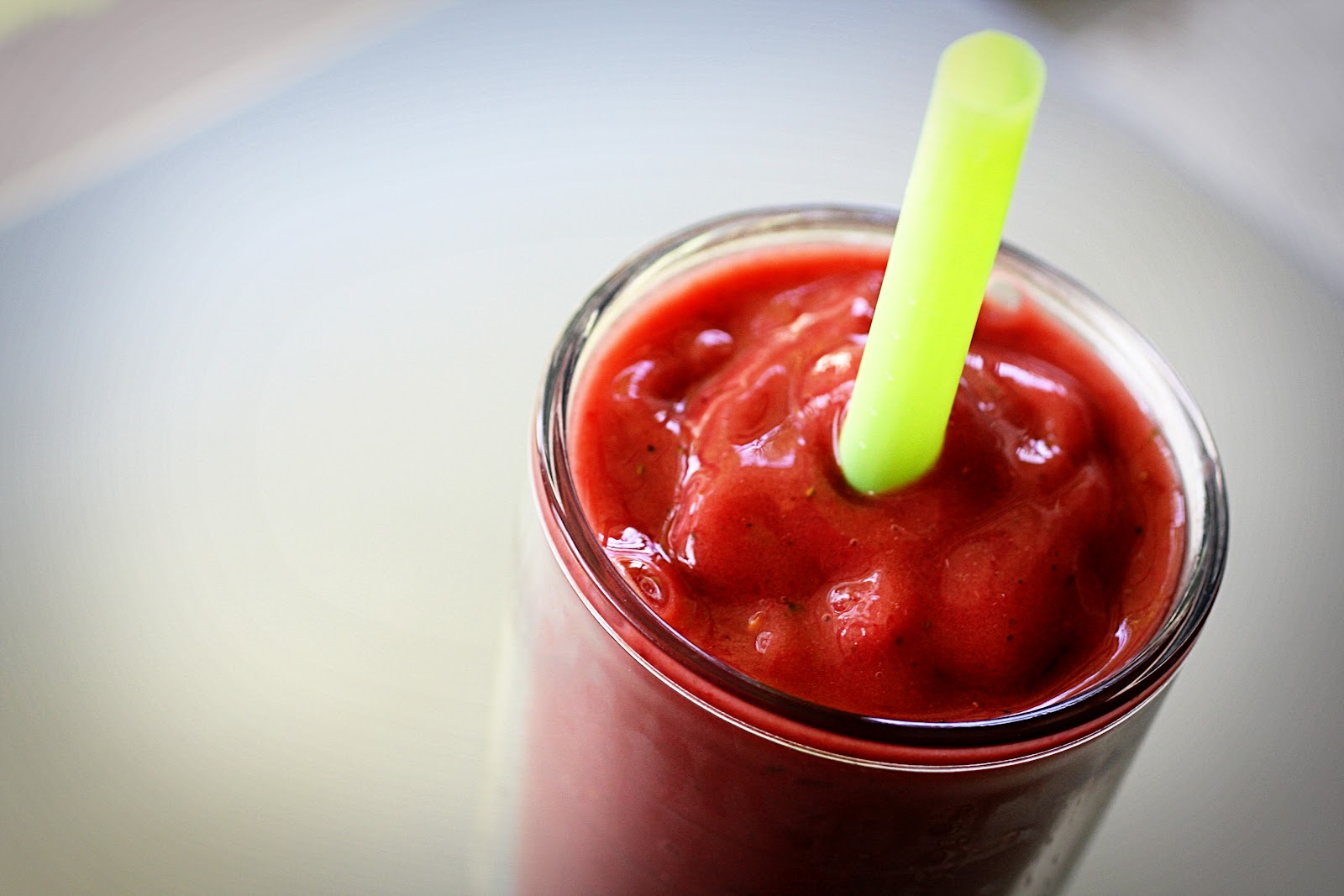Sea Salt Your Day To Keep The Nasties Away
0 CommentsMany people have more fear of using salt in their diet compared to public speaking, heights, and spiders.
Have you been told to lower your salt intake because of high blood pressure? Do you feel that salt will dehydrate you and shrivel you up like a prune? (I am not a medical doctor, and am not giving out any type of diagnosis here, just sharing my experience and advice)
Using the right type and amount of the right kind of sea salt is NECESSARY for your body to function on a daily basis! Quality sea salt packs a serious metabolic punch that you should not miss.
I am the type of person and health practitioner that enjoys knowing WHY and HOW something hinders or helps the body.
Doesn’t it seem like many “educators” simply state things like “don’t eat salt because it raises your blood pressure,” or “you should eat low carb because you need to keep your blood sugar stable.”
Those are all statements without true explanation, in my opinion.
Many times people just repeat what they have heard from others. “You should be eating a raw kale salad everyday because it’s full of nutritious goodies.” Once again, just a statement that goes nowhere.
Thanks to the work of Dr. Ray Peat and the Metabolic Blueprint course I have taken from Josh and Jeanne Rubin, my views on many things have shifted…especially my view on salt.
How worried are you about the common blood pressure fear? I’d like to shed some new light on things.
In Dr. Ray Peat’s article Salt, Energy, Metabolic Rate, and Longevity he states “Salt restriction, according to a review of about 100 studies (Alderman, 2004), lowers the blood pressure a few points. But that generally doesn’t relate to better health. In one study (3000 people, 4 years), there was a clear increase in mortality in the individuals who ate less salt. An extra few grams of salt per day was associated with a 36% reduction in “coronary events” (Alderman, et al., 1995). Another study (more than 11,000 people, 22 years) also showed an inverse relation between salt intake and mortality (Alderman, et al., 1997).”
I have never been scared of using good quality sea salt, thanks to all of the tree hugging kale juicing hippies I have chosen to study under over the years (yes I am still thankful and love all of them even though my philosophy has changed)
Can you overdo it with sea salt? Are there a ton of unhealthy sodium-laced items out there?
Heck yes!
The numerous unhealthy sodium options will light up your nervous system up like a Christmas tree.
If your diet consists of processed sodium on a daily basis, you are contributing to negatively affecting your internal systems, particularly one of the major hormonal systems that helps keep your blood pressure in check.
Unhealthy sodium can be found in packaged foods, boxed items, salt shakers at restaurants (unless they say otherwise), prepared foods, food at restaurants, and in many grocery store sauces/dressings/toppers, etc.
These are the sodium culprits that you should become aware of if you want a good report card from the doc.
To begin understanding how sea salt is necessary for you, let’s have a look at that major hormonal system I just mentioned.
It’s time to dive into a nerdy yet fun piece of the body called the Renin-angiotensis-aldosterone system (RAAS).
This system is one of our hormonal systems that regulates blood pressure and water balance.
Good quality sea salt in the right amount will send appropriate signals to the RAAS, keeping it balanced.
Bad quality sea salt (plus many other lifestyle stressors) in the wrong amount will produce a plethora of stressful signals.
Your body’s ideal way of living is with minimal stressors, whether it be from food, exercise, emotion, or environmental.
I consider these various stressors to be a battle for all of us. It’s your job to fight these mini battles with healthy strategies.
The more you affect the systems of your body (processed salt, poor sleep, etc), the more wear and tear takes place on your RAAS and the overall “engine” of your body.
It’s essential for you to keep your oil clean and your pistons firing if you want the many organs and internal functions of your body to age gracefully.
An interesting piece Dr. Peat mentions regarding the RAAS is, “It has been known for many years that decreasing sodium intake causes the body to respond adaptively, increasing the renin-angiotensin-aldosterone system (RAAS). The activation of this system is recognized as a factor in hypertension, kidney disease, heart failure, fibrosis of the heart, and other problems. Sodium restriction also increases serotonin, activity of the sympathetic nervous system, and plasminogen activator inhibitor type-1 (PAI-1), which contributes to the accumulation of clots and is associated with breast and prostate cancer. The sympathetic nervous system becomes hyperactive in preeclampsia (Metsaars, et al., 2006)
Protective effects of increased sodium are that it improves immunity (Junger, et al., 1994), reduces vascular leakiness, and alleviates inflammation (Cara, et al., 1988). All of these effects would tend to protect against the degenerative diseases, including tumors, atherosclerosis, and Alzheimer’s disease. The RAA system appears to be crucially involved in all kinds of sickness and degeneration, but the protective effects of sodium are more basic than just helping to prevent activation of that system.”
Some of this physiology is a bit too much for me to comprehend at times, but I have been slowing putting the pieces of the puzzle together.
Kate Deering, a fellow health practitioner, has some powerful things she discusses on her Salt Controversy blog.
She mentions, “When your blood pressure is low, you have too little salt, or you get “stressed out” your body signals renin from your kidneys to be released into circulation. Renin helps convert angiotensinogen, released by the liver, into angiotensin I. Angiotensin I is then converted into angiotensin II by an enzyme found in the lungs called angiotensin-converting enzyme (ACE). Angiotensin II is the active hormone in this process. Angiotensin II (A2) is a very powerful vasoconstrictor causing four main things (which are outlined below) to occur in the body that will increase blood pressure:
- Arteries in the body constrict, increasing blood pressure
- The pituitary gland to release anti-diuretic-hormone (ADH), which tells the body to increase water absorption. This will increase stoke volume (the volume of blood pumped from one ventricle of the heart with each beat), which leads to higher blood pressure
- The kidneys to directly reabsorb sodium. Increased sodium in the blood will drive more water into the blood and thus, increase blood pressure.
- And finally, A2 signals the adrenals to release the hormone aldosterone. Aldosterone increases Na absorption into the blood and cells and releases potassium into the urine. Water will follow Na into the blood and cells: this increases not only blood pressure but also water retention in the cells (i.e. edema).”
A diet devoid in daily sea salt will continuously activate your RAAS. Sodium can affect your RAAS in a negative way, but a diet high in good quality sea salt is not the piece to be concerned about. When you keep pushing on the RAAS gas pedal and your sympathetic nervous system (poor quality salt, mental/emotional/physical stress, sleep deprivation, lack of nutrition, any form of internal/external stress), that is when you start seeing those blood pressure medications stacking up on your kitchen counter.
Kate also shares that “Problems start occurring when we over-stress our bodies and the RAAS system doesn’t turn off. This dysfunction, not salt itself, is what leads to: constricted arteries; increased water and Na retention; hypertension; and quite possibly a heart attack. Salt retention and increased blood pressure are just results that occur from a system that has become over-worked and over-stressed.”
Many biochemical things take place inside our body when we become stressed. Stressors to our nervous system are overlooked and then some.
Remember the course I took that I mentioned earlier? Josh (soon to be Josh the D.O.) and Jeanne Rubin have two extremely informative courses called the Metabolic Blueprint and Fight Fatigue With food.
In Josh’s YouTube video on Salt, he shares, “When our body is stressed, estrogen is released in the body to help bring the blood sugar down from the aftereffects of adrenaline and cortisol. Estrogen pushes a protein called albumin out of the blood as well as water out of the blood and into the tissues. Albumin is held in the liver, focusing on “hanging out” to help detoxify toxins. When albumin is low then the liver is put on overdrive.”
Say hello to edema!
Josh also says “It’s interesting to note the importance of CO2 in the body. Eating the right foods and using the right type of sea salt will increase CO2 and help keep Serotonin levels in check. When serotonin levels are high, inflammatory markers surface. Excess calcium begin to enter our cells at this time, which is a considered a stressor. Co2 allows our cells to remove the proper amount of CA (calcium), and open the door for NA (sodium) to go in….all at an efficient rate. The balance of Ca and Na is esssential for our cells to “breath” correctly and our metabolism to stay revved up.”
Do you still feel that sea salt is the main reason that people’s blood pressure is through the roof?
Using the right kind of sea salt makes a huge difference in your daily biochemical processes.
Ok, so what kind of sea salt should you use?
You might be a little shocked to hear that I stopped recommending the pink, black, and beautifully colored types of sea salt. Yes, I used to use many of them, and recently switched after being educated about what darker sea salt contains.
Pink, black, and pretty much all the colored sea salts contain iron. Iron is considered to be a toxin in excess amounts within the body. These types of salts are definitely more nutritious than the normal salt you find at Denny’s, but be cautious of how much of these types you use.
One that does not contain iron is Morton’s Pickling Salt.
It’s white…I know. It looks processed…I know. Morton’s….I know!
After doing a bit of reading and researching, this sea salt does not contain iron and isn’t bleached, refined, or processed like typical white sea salt. I buy it in a 2-pack on Amazon.
What will clean quality sea salt do for you?
- Lower adrenaline and overall stress (especially at night)
- Strengthen your immune system
- Reduce edema/swelling
- Boost your sleep
- Assists hydration
- Bring down cortisol
- Increase progesterone
- Thermogenic effect/elevates body temperature (Dr. Peat states “Protein, salt, thyroid, and progesterone happen to be thermogenic, increasing heat production and stabilizing body temperature at a higher level”)
- Provide nourishment to the thyroid
Next piece to address….how much?
(Keep in mind that this is person specific and please consult a qualified health care professional before you jump into any nutritional guidelines.)
Ok, keep your knickers on tight for this one.
Many of the folks who follow a nourishing salt regimen are taking in between 1-3 tablespoons of quality sea salt.
Start with 1/4 teaspoon per day for one week. Begin to titrate up 1/4 teaspoon each following week until you reach your desired amount.
Body temperature and pulse (as you have read in my other articles) will help to monitor your salt intake similar to food.
I probably take in about 2 tablespoons per day roughly, some days a bit less and some days a bit more. My intake goes up when I have a lot on my plate that puts a load on my mental, emotional, and physical body. (A busy day with clients, a workout mid day, and other things to accomplish and complete)
Here is a special tip for reading all the way through this blog…
Get a nice dose of sea salt before bed. Using sea salt before bedtime will help create better sleep patterns and begin to bring down and regulate the nasty night time hormones.
Bringing down your nighttime adrenaline and cortisol before shut eye is necessary for quality rest.
Did you enjoy this nerdy and controversial blog on sea salt?
I hope my explanations and resources were beneficial to your understanding of the many roles sea salt plays from within.
I’m glad that I could help loosen your fears on what’s been known for years as the white devil.
Start knocking on the salty door to your metabolism. It’s waiting for this necessary mineral.











